Hippeastrum is a bulbous flower with oblong dark green leaves and large inflorescences of various colors. We will talk about how to grow this handsome man at home and how to care for him in our article.
Material Content:
Types and varieties of plants
Translated from Greek, the name of the plant under discussion means "star" and "cavalier". The birthplace of hippeastrum is the tropical forests of Central America. It belongs to monocotyledonous plants and has more than 80 varieties. They are distinguished by the color of the inflorescence and the shape of the bud. Some varieties are bred on the street, and some are grown at home.
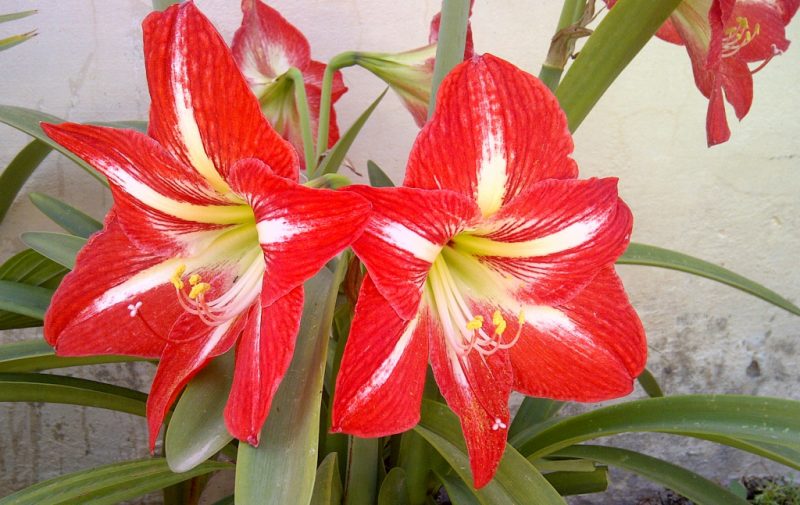
The most common species is garden hippeastrum. The flower has a large bulb, reaching 20 centimeters, half of which is hidden in the ground. Oblong leaf-shaped or ribbon-shaped leaves are combined in a basal rosette approximately 40-50 cm long. Funnel-shaped or bell-shaped inflorescences are collected in 3-4 pieces on a peduncle up to one meter tall.
Common plant species are:
- hippeastrum bright red is distinguished by inflorescences of red color with greenish stripes;
- hippeastrum mesh has flowers with pink stripes;
- Hippeastrum Palace blooms with beautiful red flowers.
Among other popular varieties distinguish:
- Hippeastrum flower Lady Jane variety. It reaches a diameter of 20-25 cm.The petals are pale orange with pink-yellow stripes in the center and wavy edges.
- In the variety Papillio Butterfly, the bulb has an oblong shape. The name of this variety arose due to the shape of the flowers - they look like butterflies of a pale white color or yellow-green. In the center of each petal is a bright crimson strip.
- Leopold's hippeastrum has dark green tapered leaves. The flower is saturated red in color, which at the ends of the petals smoothly turns into white.
Hippeastrum: features of growing
A nice feature of hippeastrum is that the flowering time can be picked up and timed to some event.
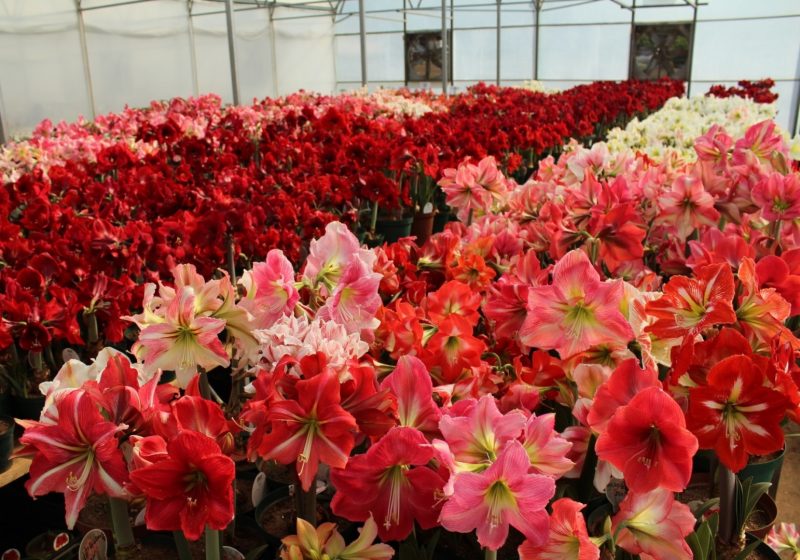
- Typically, hippeastrum bulbs are bought in the fall and winter, when the flower is at rest.
- Before spring planting in the soil, the bulb must be soaked in warm water for 2-3 hours (the so-called plant distillation).
- Then it needs to be planted in the ground so that almost 1/2 of the head is above the ground.
It's important to know! If it is necessary to achieve the rapid appearance of a peduncle, you need to water the plant when planting, then put it in a warm, lit place and stop active watering.
High humidity reduces the growth of peduncles and accelerates the development of foliage. This is one of the causes of passivity of the hippeastrum. In addition, in order for the plant to please with bright colors in the next season, it needs bright lighting and good care after the previous flowering.
Hippeastrum care at home
The plant can not be called very capricious, because every attentive florist can provide care for it.
Soil requirements
For flower cultivation, it is necessary to purchase soil for bulbs, which is sold in any horticultural department. You can prepare the mixture yourself.
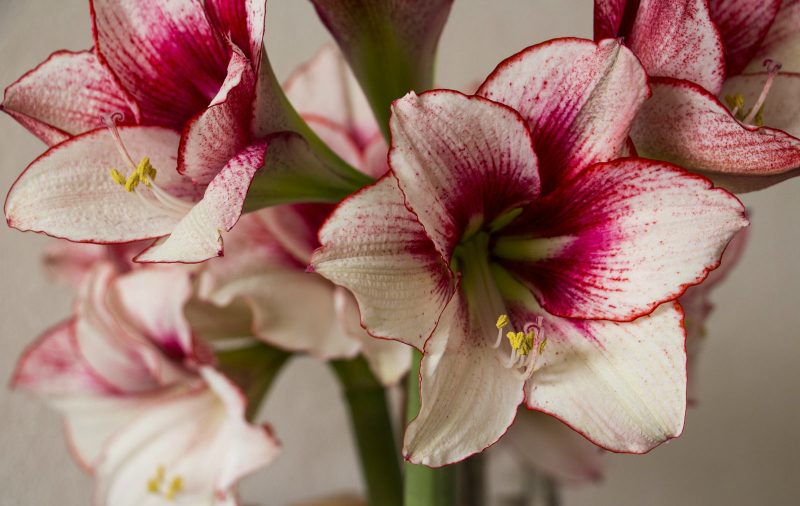
It consists of:
- turf land;
- coarse river sand;
- peat;
- and good humus.
The ratio of the soil looks like this: 2: 1: 1: 1.
Suitable for these purposes is any fertile, heavy mixture of turf, humus and leafy soil with sand included.
Temperature, humidity, lighting
The plant is suitable for normal room temperature. During the summer period, + 18-23 degrees should be provided, and during the "sleep" in winter - 10-12 degrees.
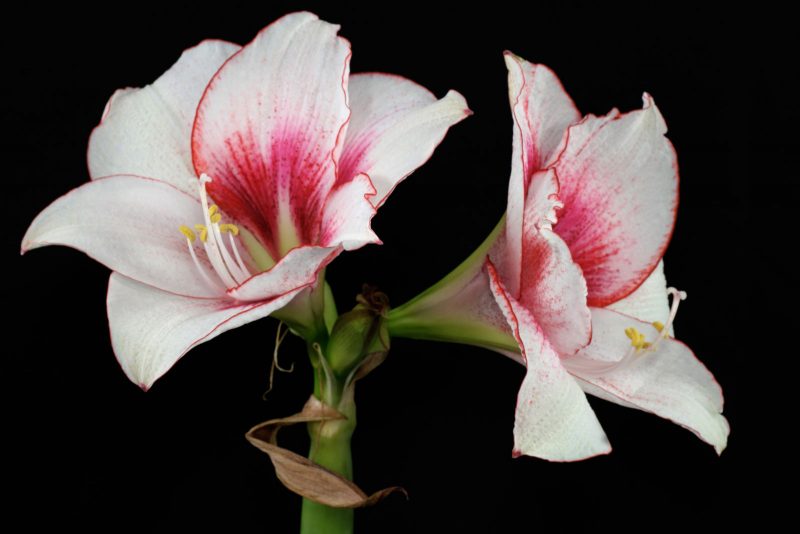
The plant does not require additional moisture, but is photophilous and must be kept on the window from the southeast or southwest. During sleep, the flower can be placed in a room with poor lighting.
Watering a flower
When watering, it is necessary to exclude the ingress of liquid on the bulb.
- When a plant comes out of a "dream", it needs to be watered as necessary.
- With the appearance of the arrow of the peduncle, watering is reduced until it reaches a height of 10-20 cm. After that, watering is increased.
- After flowering, regular watering is recommended, since there is growth of the bulb, leaves and the laying of peduncles.
- With the onset of autumn, watering is reduced and practically stops by the end of September.
- When the flower spends the winter in a cool room, the plant can be watered once every 30-45 days. If in a warm place, then it is watered occasionally and little by little.
Fertilizer and fertilizer
You need to start feeding the hippeastrum from the moment the first leaves begin to appear, and the peduncle arrow grows to a height of 15 cm. But you can do this later.
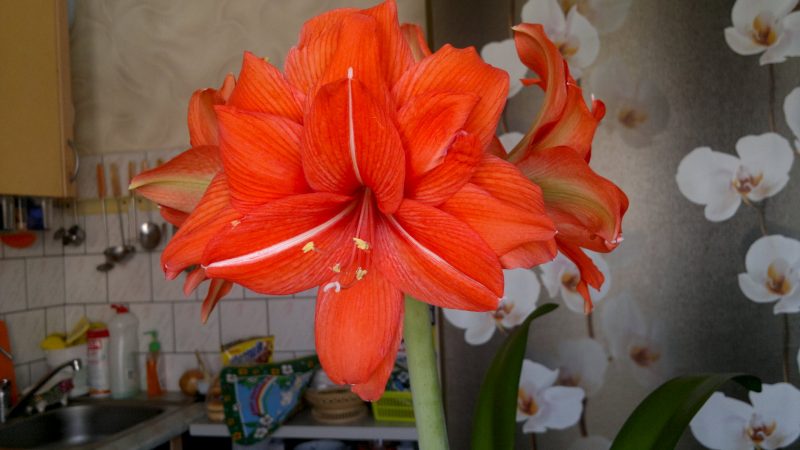
At the very beginning of the growing season, fertilizers should contain nitrogen and potassium, and during flowering, phosphorus and potassium. It is recommended to fertilize the plant 2 times a month, and 30 days before dormancy, feeding should be stopped.
Pruning and transplanting
By the end of autumn, the leaves should die out on their own due to reduced watering and poor natural lighting. Healthy greens should not be cut, because with natural dying off, all the necessary substances are transferred to the bulb. If a couple of green leaves remain on it that will not interfere with the storage process, they can be left.

Hippeastrum transplantation is preferably done once a year.Either before the flower goes to "sleep", or before the start of the growing season.
It's important to know! The pot for transplanting should be deep, and the distance between the bulb and the surface of the pot should not exceed 2 cm.
- When transplanting a flower, you need to provide good drainage. You can take fine gravel or expanded clay.
- Prepare the soil from equal parts of the earth, humus, sand, and turf.
- The roots are not trimmed in the process. Only dry ones are removed, and the cut is sprinkled with fine charcoal.
- The hippeastrum bulb should be placed two-thirds in the soil, so that the rest is on top.
Flowering and dormancy
- Young plants usually bloom once a year, in winter or early spring. And adults bloom in the summer, if they are well looked after.
- Basically, two, less often three peduncles are formed.
- Inside the bulb, inflorescences are laid every 4 leaves.
- Leaves usually grow on both sides alternately, but when laying peduncles, two leaves grow side by side, on one side.
- The number of leaves and inflorescences depends on the care, the better it is, the more flowers there will be.
For flowering at room conditions, hippeastrum needs peace. Typically, the rest period lasts from early October to late December. For its offensive, from the end of August, it is necessary to gradually reduce watering and top dressing, and in late September, the flow of water will almost completely cease. In general, in hybrids the leaves completely dry out and then they must be carefully removed. There are varieties that retain leaves for the winter, but new ones do not grow.

- When wintering in a warm room, it is necessary to observe the root system so that it does not dry out, and sometimes water.
- And in a cool room, the plant must be provided with watering no more than once a month.
If you wish, you can create a dormant period artificially in order to get flowering more than once a year.
It should be borne in mind that for hippeastrum, summer is warm, good watering and top dressing, and winter is dry and cool (10-16 degrees). Therefore, providing such conditions artificially, you can achieve additional flowering.
Hyperastrum reproduction
Hippeastrum propagation occurs in three ways: seeds, children and bulb division. Breeding a plant with seeds justifies itself exclusively in breeding, due to difficulties with collection. At home, the vegetative propagation of hippeastrum is recommended - with bulbs or children.
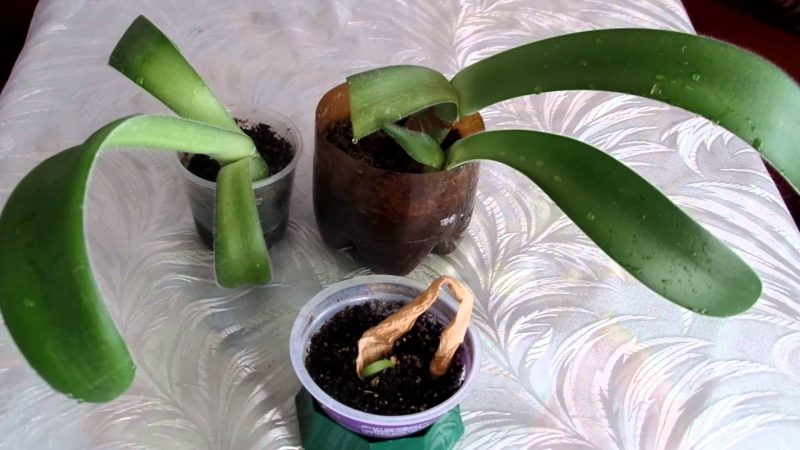
The number of children in hippeastrum is small, depending on the variety and the conditions in which the plant is located. Children appear regardless of the time of year and when they are transplanted, they are carefully broken off.
Large varieties are propagated by scales, because they usually have few children.
- It is necessary to wash the onion, cut the leaves to the root neck and reduce the roots to 2-3 cm.
- Then it should be cut into pieces with a clean knife. You can get up to 16 parts, depending on the size of the bulb. Each of them should have a part of the bottom.
- Pieces should be dusted with “Kornevin” or another root growth stimulator and planted in containers with coarse sand or moss so that the tops are on the surface.
- Germinate plants at a temperature of at least 20 degrees.
Pest and Disease Control
Red rot is one of the most intractable diseases of hippeastrum.
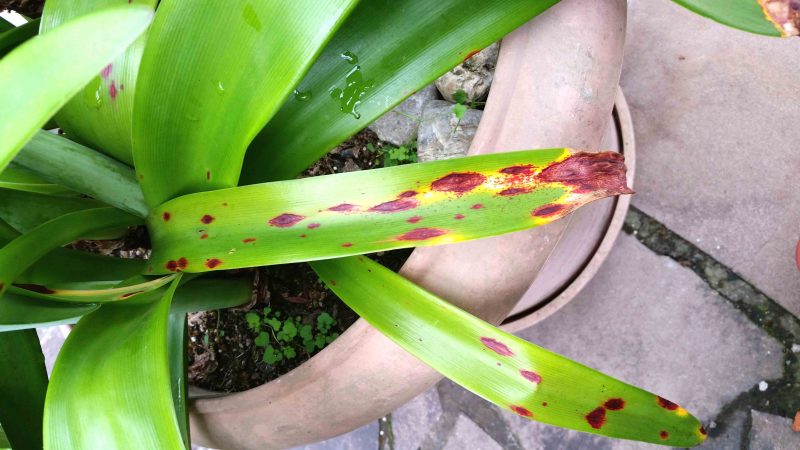
- It is necessary to cut out all the infected places, cut off the dead roots, and cut the cut points with “Fundazol” and sprinkle with crushed wood ash.
- You can soak the onion in a solution of "Maxim" (fludioxonil) for half an hour. The treated onion must then be dried for a week and planted in new soil and a new pot.
When irrigating with the Maxim solution, the soil will be disinfected. If possible, crushed sphagnum should be added to the soil. The bulb should be planted so that it is 2/3 above the soil - this will allow you to observe its condition. Watering should be minimized and make sure that water does not get on the bulb.
The pests for the hippeastrum are the spider mite, scutellum and mealybug. They are located mainly on the leaves and under the scales of the bulb. Those pests that are visible should be removed with gauze moistened with an alcohol solution, and then treat the plant with “Karbofos” or “Actellik”.
- If the plant has a low peduncle or several underdeveloped leaves, this indicates a bulb disease or its underdevelopment.
- The soft condition, lethargy, and the presence of brown or black spots also indicate a painful condition of the bulb.
- A bad sign if plots of rot are visible on its surface or at the base.
- An alarm when insects curl around a plant.
With excessive moisture, the bulb must be dried and treated with fungicide "Maxim" or a solution of potassium permanganate maroon color.
Why does not hippeastrum bloom, how to make bloom?
Many gardeners complain that their hippeastrum does not bloom.
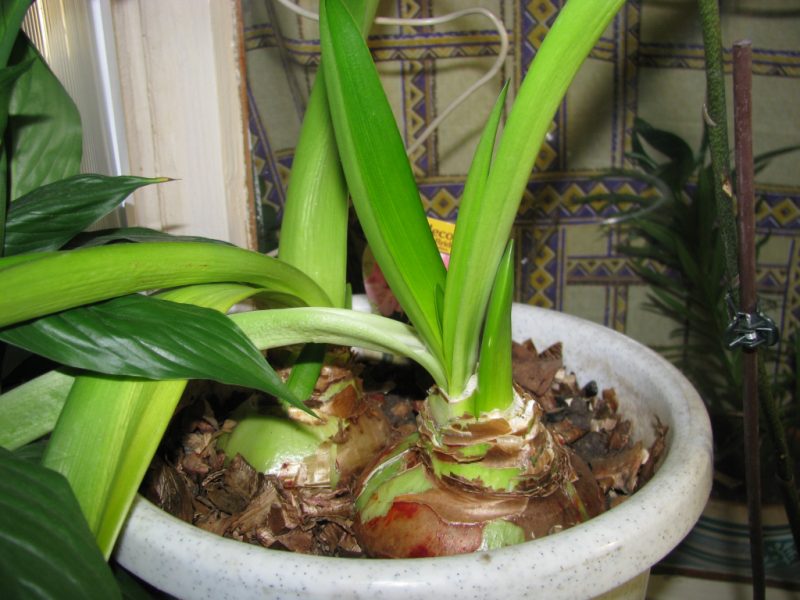
- It happens that the reason is a lack of nutrients. Accordingly, the flower should be regularly watered and fed in sufficient quantities.
- The next reason may be waterlogging and rotting of the bulb.
- When infected with these pests, the plant will not bloom either.
There are several tricks to make the hippeastrum bloom:
- The plant is finished watering in August, placed in a dry and dark place. And then they start watering in late January. The plant will bloom within 40 days.
- Bulbs are treated with water, the temperature of which is 44–46 degrees, for three hours. Then they put the flower in a warm and well-lit place. The plant should not be watered until the arrow of the peduncle appears and then it should bloom within three weeks.
- In mid-summer, the leaves are trimmed with a sharp object treated with alcohol, and watering is stopped for 30 days. After this period, watered and fed with complex fertilizer. By September, the plant will bloom.
Differences of amaryllis from hippeastrum
Amaryllis and hippeastrum are often difficult to distinguish, because they are so similar - bulbs of large diameter, from which slender arrows come out with flowers resembling a large bell. Amaryllis "Beauty" (A. belladonna) can be rarely seen, and the flower that sellers give out for it, in fact it is not.
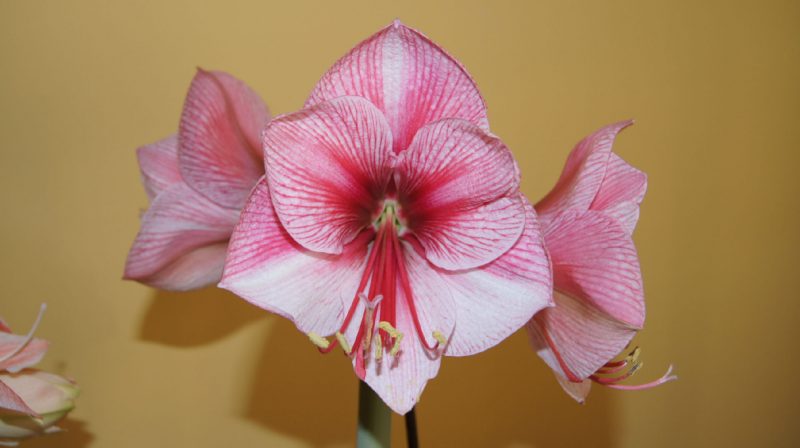
Striking a variety of shades of petals of the hippeastrum:
- creamy white;
- lilac;
- deep red;
- pale pink;
- bright orange;
- sometimes with streaks of a different color.
The hippeastrum hybrid flower has hollow peduncles, and up to 6 flowers are formed in its inflorescence. Amaryllis has stalks that are dense, and up to 12 flowers in inflorescence.
Hippeastrum blooms in winter or spring, has a belt-shaped leaf up to 50 cm long, which usually grows after flowering, and a funnel-shaped flower 12-15 cm in diameter. Amaryllis blooms in autumn, in a leafless state, and has a flower up to 8 cm in diameter.
Based on the foregoing, we can conclude that although the hippeastrum requires proper attention and personal care, the result is worth it! An unusual, spectacular plant is sure to please the bright and delicate colors of everyone around.












